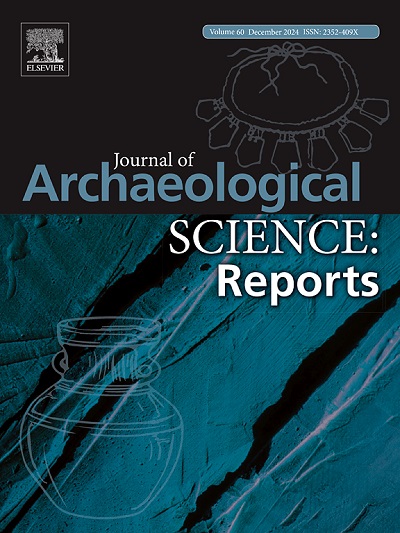Mechanical stress in the city of Thebes, Boeotia, during Classical to Hellenistic times
IF 1.5
2区 历史学
0 ARCHAEOLOGY
引用次数: 0
Abstract
During Classical Antiquity, central mainland Greece was characterized by important historical events that shaped the Greco-Roman world. Positioned in this key region, Thebes had a tumultuous history and played an important part in these events. The concomitant socio-political shifts significantly affected the lives of the city’s population, making it an ideal setting for studying changes in health and lifestyle over time. This paper focuses on human skeletal remains excavated from the north-eastern cemetery of Thebes. Skeletal indicators related to mechanical stress were examined, namely osteoarthritis, intervertebral disc disease, apophyseal joint arthritis, Schmorl’s nodes, entheseal changes and long bone cross-sectional geometric properties. The frequency of mechanical stress markers was rather low for both periods, as expected given the urban setting of this population. Although we would expect more hardship during the Hellenistic period, as attested in adjacent contemporary populations, most markers exhibited comparable frequencies for the two periods, while detailed comparisons showed a complex pattern. Similarly, with regard to sex differences, a complex pattern was revealed, suggesting that males and females engaged in different activities diachronically, however, involving overall comparable physical demands for both sexes.
古典到希腊化时期,庇奥提亚底比斯城的机械应力
在古典时期,希腊中部大陆以塑造希腊罗马世界的重要历史事件为特征。底比斯位于这一关键地区,有着动荡的历史,在这些事件中发挥了重要作用。随之而来的社会政治变化极大地影响了城市人口的生活,使其成为研究健康和生活方式随时间变化的理想场所。本文主要研究底比斯东北部墓地出土的人类骨骼遗骸。检查与机械应力相关的骨骼指标,即骨关节炎、椎间盘疾病、棘关节关节炎、施莫尔淋巴结、骨骺改变和长骨截面几何特性。在这两个时期,机械应力标记的频率相当低,正如预期的那样,考虑到这一人口的城市环境。虽然我们预计在希腊化时期会有更多的困难,正如在邻近的当代人群中所证明的那样,大多数标记在两个时期表现出可比较的频率,而详细的比较显示出一个复杂的模式。同样,关于性别差异,揭示了一个复杂的模式,表明男性和女性从事不同的活动历时,然而,涉及对两性的总体可比较的身体需求。
本文章由计算机程序翻译,如有差异,请以英文原文为准。
求助全文
约1分钟内获得全文
求助全文
来源期刊

Journal of Archaeological Science-Reports
ARCHAEOLOGY-
CiteScore
3.10
自引率
12.50%
发文量
405
期刊介绍:
Journal of Archaeological Science: Reports is aimed at archaeologists and scientists engaged with the application of scientific techniques and methodologies to all areas of archaeology. The journal focuses on the results of the application of scientific methods to archaeological problems and debates. It will provide a forum for reviews and scientific debate of issues in scientific archaeology and their impact in the wider subject. Journal of Archaeological Science: Reports will publish papers of excellent archaeological science, with regional or wider interest. This will include case studies, reviews and short papers where an established scientific technique sheds light on archaeological questions and debates.
 求助内容:
求助内容: 应助结果提醒方式:
应助结果提醒方式:


